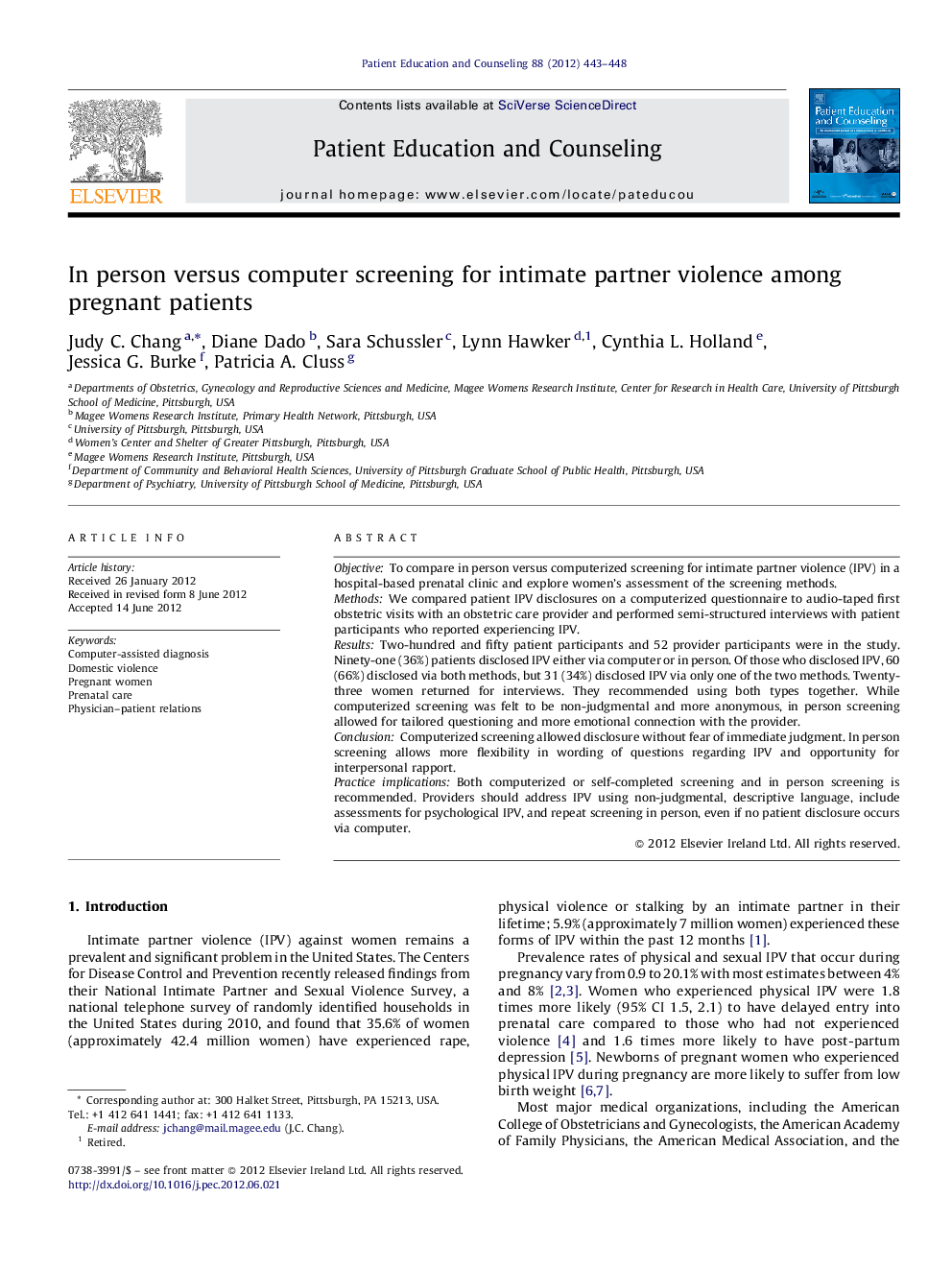| Article ID | Journal | Published Year | Pages | File Type |
|---|---|---|---|---|
| 3815172 | Patient Education and Counseling | 2012 | 6 Pages |
ObjectiveTo compare in person versus computerized screening for intimate partner violence (IPV) in a hospital-based prenatal clinic and explore women's assessment of the screening methods.MethodsWe compared patient IPV disclosures on a computerized questionnaire to audio-taped first obstetric visits with an obstetric care provider and performed semi-structured interviews with patient participants who reported experiencing IPV.ResultsTwo-hundred and fifty patient participants and 52 provider participants were in the study. Ninety-one (36%) patients disclosed IPV either via computer or in person. Of those who disclosed IPV, 60 (66%) disclosed via both methods, but 31 (34%) disclosed IPV via only one of the two methods. Twenty-three women returned for interviews. They recommended using both types together. While computerized screening was felt to be non-judgmental and more anonymous, in person screening allowed for tailored questioning and more emotional connection with the provider.ConclusionComputerized screening allowed disclosure without fear of immediate judgment. In person screening allows more flexibility in wording of questions regarding IPV and opportunity for interpersonal rapport.Practice implicationsBoth computerized or self-completed screening and in person screening is recommended. Providers should address IPV using non-judgmental, descriptive language, include assessments for psychological IPV, and repeat screening in person, even if no patient disclosure occurs via computer.
